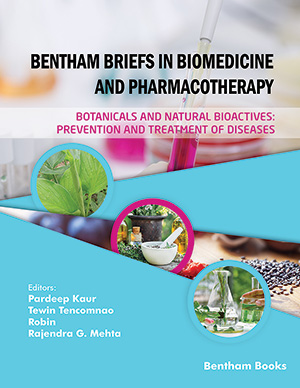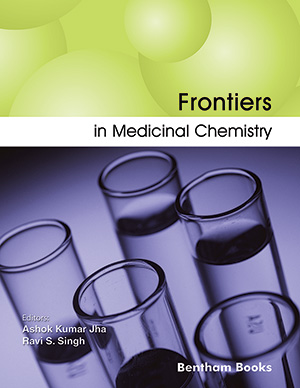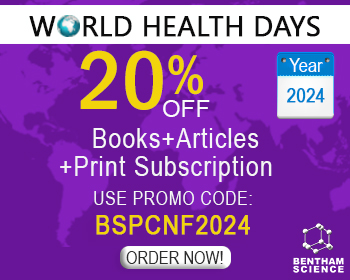Abstract
In this paper, an overview of recent advances of paclitaxel formulations based on nanosystems is provided. Paclitaxel is very effective in the treatment of various cancers especially ovarian and breast cancer, but it demonstrates poor aqueous solubility, which results in the difficulty challenging the development of paclitaxel parenteral formulations, so its clinical application is greatly restricted. The conventional paclitaxel formulation uses Cremophor EL and ethanol to solubilize paclitaxel, which could cause severe side effects. Nanotechnology has been widely exploited in the field of antitumor research, and paclitaxel is no exception. In recent decades, a series of novel formulations of paclitaxel based on nanotechnology have been developed, including albumin-bound paclitaxel, polymeric micelle-formulated paclitaxel, polymer-paclitaxel conjugates, liposome encapsulated paclitaxel etc. The common advantage shared with these novel injectable formulations is that they are developed based on nanotechnology and Cremophor EL-free. In addition, these nanoformulations can significantly reduce toxicities of paclitaxel and greatly promote its antitumor efficiency.
Keywords: Paclitaxel, poor water solubility, solvent related side effects, paclitaxel formulations, cremophor EL-free, nanosystems, nanotechnology, antitumor efficiency
Mini-Reviews in Medicinal Chemistry
Title:Advances of Paclitaxel Formulations Based on Nanosystem Delivery Technology
Volume: 12 Issue: 5
Author(s): C. Luo, Y. Wang, Q. Chen, X. Han, X. Liu, J. Sun and Z. He
Affiliation:
Keywords: Paclitaxel, poor water solubility, solvent related side effects, paclitaxel formulations, cremophor EL-free, nanosystems, nanotechnology, antitumor efficiency
Abstract: In this paper, an overview of recent advances of paclitaxel formulations based on nanosystems is provided. Paclitaxel is very effective in the treatment of various cancers especially ovarian and breast cancer, but it demonstrates poor aqueous solubility, which results in the difficulty challenging the development of paclitaxel parenteral formulations, so its clinical application is greatly restricted. The conventional paclitaxel formulation uses Cremophor EL and ethanol to solubilize paclitaxel, which could cause severe side effects. Nanotechnology has been widely exploited in the field of antitumor research, and paclitaxel is no exception. In recent decades, a series of novel formulations of paclitaxel based on nanotechnology have been developed, including albumin-bound paclitaxel, polymeric micelle-formulated paclitaxel, polymer-paclitaxel conjugates, liposome encapsulated paclitaxel etc. The common advantage shared with these novel injectable formulations is that they are developed based on nanotechnology and Cremophor EL-free. In addition, these nanoformulations can significantly reduce toxicities of paclitaxel and greatly promote its antitumor efficiency.
Export Options
About this article
Cite this article as:
Luo C., Wang Y., Chen Q., Han X., Liu X., Sun J. and He Z., Advances of Paclitaxel Formulations Based on Nanosystem Delivery Technology, Mini-Reviews in Medicinal Chemistry 2012; 12 (5) . https://dx.doi.org/10.2174/138955712800493924
| DOI https://dx.doi.org/10.2174/138955712800493924 |
Print ISSN 1389-5575 |
| Publisher Name Bentham Science Publisher |
Online ISSN 1875-5607 |
Call for Papers in Thematic Issues
Bioprospecting of Natural Products as Sources of New Multitarget Therapies
According to the Convention on Biological Diversity, bioprospecting is the exploration of biodiversity and indigenous knowledge to develop commercially valuable products for pharmaceutical and other applications. Bioprospecting involves searching for useful organic compounds in plants, fungi, marine organisms, and microorganisms. Natural products traditionally constituted the primary source of more than ...read more
Computational Frontiers in Medicinal Chemistry
The thematic issue "Computational Frontiers in Medicinal Chemistry" provides a robust platform for delving into state-of-the-art computational methodologies and technologies that significantly propel advancements in medicinal chemistry. This edition seeks to amalgamate top-tier reviews spotlighting the latest trends and breakthroughs in the fusion of computational approaches, including artificial intelligence (AI) ...read more
Natural Products and Dietary Supplements in Alleviation of Metabolic, Cardiovascular, and Neurological Disorders
Metabolic disorders like diabetes, obesity, inflammation, oxidative stress, cancer etc, cardiovascular disorders like angina, myocardial infarction, congestive heart failure etc as well as neurological disorders like Alzheimer?s, Parkinson?s, Epilepsy, Depression, etc are the global burden. They covered the major segment of the diseases and disorders from which the human community ...read more
Natural Products in Drug Discovery
Natural products have always been one of the important ways of drug discovery due to their novel skeleton and diverse functional group characteristics. According to statistics, between 1981 and 2019, the FDA approved a total of 1,394 small molecule drugs for marketing, of which 930 marketed drugs originated from the ...read more
 73
73
- Author Guidelines
- Graphical Abstracts
- Fabricating and Stating False Information
- Research Misconduct
- Post Publication Discussions and Corrections
- Publishing Ethics and Rectitude
- Increase Visibility of Your Article
- Archiving Policies
- Peer Review Workflow
- Order Your Article Before Print
- Promote Your Article
- Manuscript Transfer Facility
- Editorial Policies
- Allegations from Whistleblowers
Related Articles
-
Therapeutic and Diagnostic Applications of Nanoparticles
Current Drug Targets FDG-PET/CT for Systemic Infections
Current Molecular Imaging (Discontinued) Modified Pulsincap of Ibuprofen - A Novel Approach for Chronotherapy
Current Drug Delivery Molecular Evaluation of HIF-1α Gene Variation and Determination of Its Frequency and Association with Breast Cancer Susceptibility in Saudi Arabia
Endocrine, Metabolic & Immune Disorders - Drug Targets Novel Hybrid Molecules Based on triazole-β-lactam as Potential Biological Agents
Mini-Reviews in Medicinal Chemistry The Value of Elastosonography in Evaluation of Thyroid Nodules
Recent Patents on Medical Imaging Clomiphene Citrate, Metformin or Both for Ovulation Induction in Therapy Naïve Women with Polycystic Ovary Syndrome (PCOS)? A Descriptive Review
Current Drug Therapy Evaluation of Melatonin Effect on Human Breast Cancer Stem Cells Using a Threedimensional Growth Method of Mammospheres
Anti-Cancer Agents in Medicinal Chemistry Sweet and Sour - Oxidative and Carbonyl Stress in Neurological Disorders
CNS & Neurological Disorders - Drug Targets Proline Oxidase (POX) as A Target for Cancer Therapy
Current Drug Targets A Retrospective Study on <i>Gloriosa superba</i> and Its Main Active Constituents
The Natural Products Journal Meet Our Editorial Board Member
Protein & Peptide Letters TC > 0.05 as a Pharmacokinetic Parameter of Paclitaxel for Therapeutic Efficacy and Toxicity in Cancer Patients
Recent Patents on Anti-Cancer Drug Discovery The Progress of the Anticancer Agents Related to the Microtubules Target
Mini-Reviews in Medicinal Chemistry Editorial [Hot Topic: Prospective Clinical Role for Anticancer Garlic Organosulfur Compounds (Guest Editor: Hassan T. Hassan)]
Anti-Cancer Agents in Medicinal Chemistry Synthesis and Anticancer Evaluation of some Newer 2, 5-Disubstituted-1,3, 4-Oxadiazole Analogues
Letters in Drug Design & Discovery Myeloid Derived Suppressor Cells and Their Role in Diseases
Current Medicinal Chemistry Pathophysiology of NASH: Perspectives for a Targeted Treatment
Current Pharmaceutical Design Natural Terpenoids Against Female Breast Cancer: A 5-year Recent Research
Current Medicinal Chemistry Expression and Function of PPARs in Cancer Stem Cells
Current Stem Cell Research & Therapy























